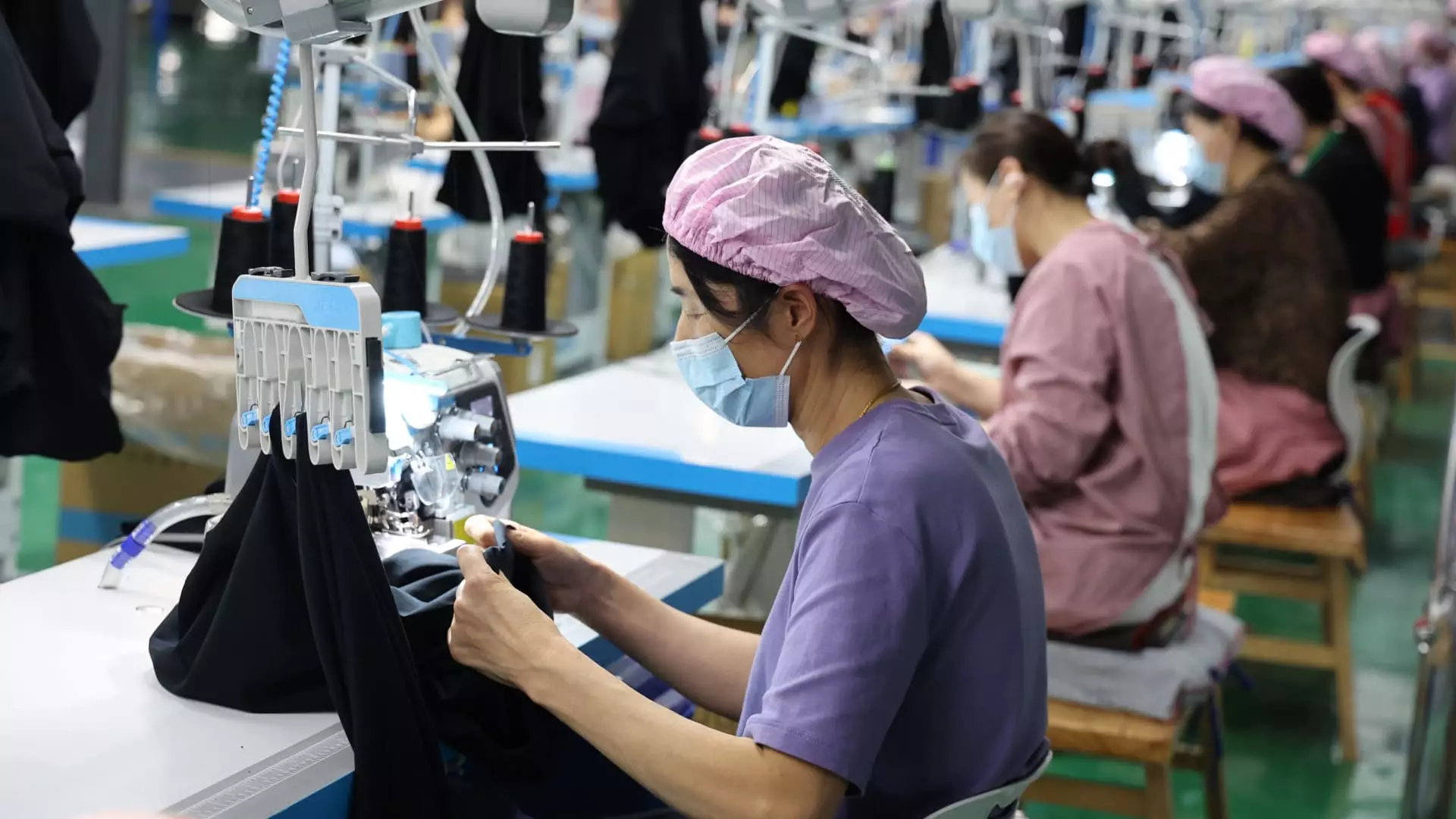As the U.S.-China trade war intensifies, a palpable sense of uncertainty hangs over China’s manufacturing sector. The recently imposed tariffs have forced many local factories to rethink their operational strategies and explore alternative markets. This adaptive response illustrates not just the vulnerabilities of the manufacturing landscape but also the inherent agility that businesses possess to survive turbulent times. Industry voices, such as Cameron Johnson from Tidalwave Solutions, have painted a concerning picture where factories, particularly in Yiwu and Dongguan—critical export hubs—are feeling the squeeze, leading to temporary furloughs for employees and halting production in specific sectors like toys and sporting goods.
This situation is not merely a seasonal adjustment; it marks a significant shift in how Chinese manufacturers will approach their global clientele. As imports from China face heightened tariffs, manufacturers find themselves at a crossroads: adapt or risk obsolescence. With estimates suggesting that between 10 million to 20 million jobs depend on exports destined for the U.S., the impact is considerable and likely to escalate if these tensions continue unabated.
Navigating New Frontiers: The Shift Toward Domestic Markets
Amid this turmoil, creativity and innovation are proving to be essential survival tools. Companies like Woodswool, a manufacturer of athletic wear, are turning to digital solutions to carve out new sales channels. By leveraging livestreaming technology—an increasingly popular method in China for product promotion—they have managed to mitigate some of the lost revenue from canceled U.S. orders. The company has already processed over 30 orders and is seeing a glimmer of hope as they pivot their focus to domestic consumers.
Such adaptive strategies highlight a broader trend, wherein exporters are seeking to connect with local markets using platforms like Baidu. This pivot not only signifies a temporary solution but also a long-term reevaluation of market strategies, as the reliance on foreign sales becomes increasingly precarious. Firms are embracing new technologies, such as AI-driven virtual sales representatives, allowing them to maintain efficiency while reducing costs.
The Role of Government and Technology in E-Commerce Evolution
The Chinese government appears keenly aware of these challenges and is encouraging localized trade as a countermeasure to external pressures. Initiatives to support e-commerce growth are gaining traction, pushing companies towards digital platforms that may very well reshape the landscape of consumer goods distribution. With tech giants like JD.com committing substantial funds to purchase surplus goods originally intended for export, the hope is to foster a burgeoning domestic market that can absorb the overflow.
Yet, one must consider the strategic implications of such measures. While they provide immediate relief for manufacturers, there remain significant challenges in reshaping production strategies to appeal to a different demographic. As noted by Ashley Dudarenok of ChoZan, products developed with Western consumers in mind may not easily transition to the tastes and preferences of Chinese buyers.
Diversification: A New Business Imperative
In light of the unfolding trade issues, many manufacturers are not just focusing on immediate sales strategies but are also looking beyond the current landscape. The diversification of production and sourcing locations is becoming essential. Countries like India and nations in Latin America and Africa are emerging as viable alternatives to China for manufacturers seeking to reduce their reliance on a single market.
Liu Xu’s experiences exporting bathroom products to Brazil exemplify this diversification strategy. With China’s exports to Brazil doubling since 2018, the potential for success remains robust despite fluctuating currency and higher shipping costs. This shift indicates a larger trend: companies are beginning to prioritize a more flexible and geographically diverse supply chain that could withstand geopolitical tensions and trade barriers.
Future Prospects Amidst Adversity
The implications of these adjustments are far-reaching. As Chinese manufacturers recalibrate their operations, they are not only ensuring their survival but may also emerge better positioned for a post-pandemic world. The resilience demonstrated amid the recent upheavals could spur innovations across sectors, fostering an environment where agility and flexibility become the new cornerstones of success.
Moreover, the journey of companies like Cotrie Logistics, which is harnessing the logistics gap to build reliable trade routes between China and Ghana, highlights the entrepreneurial spirit alive within the challenges of modern trade. These innovative solutions could redefine commerce in ways that endure far longer than the current crisis, laying a groundwork for sustainable trade practices in a rapidly globalizing world.
Through this challenging phase, the evolution of Chinese manufacturers underscores the dynamic interplay of challenges and opportunities—a narrative of resilience that could serve as a blueprint for industries worldwide facing their own tumultuous times.

